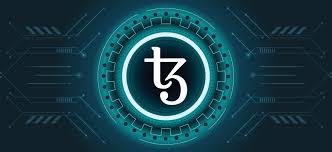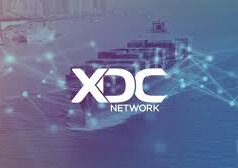In the ever-shifting landscape of blockchain technology, Tezos stands out like a beacon of innovation. Launched in 2018, this open-source, proof-of-stake blockchain has carved a niche for itself with its unique self-amending governance model, energy-efficient consensus mechanism, and a laser focus on smart contract security. With its native token, Tez (XTZ), powering a vibrant ecosystem, Tezos is making waves in decentralized finance (DeFi), non-fungible tokens (NFTs), and real-world asset tokenization. Let’s dive into why Tezos is worth your attention, how it works, and what’s fueling its momentum in 2025.
A Blockchain Built to Evolve
Tezos isn’t your average blockchain. Conceived in 2014 by Arthur and Kathleen Breitman, it was designed to tackle the shortcomings of earlier blockchains like Bitcoin and Ethereum. The Breitmans, a husband-and-wife duo with backgrounds in finance and computer science, saw the chaos caused by hard forks—splits in a blockchain that create separate networks, like Ethereum and Ethereum Classic. Their solution? A self-amending protocol that lets Tezos upgrade itself without splitting the network.
This self-amending feature is Tezos’ secret sauce. Through on-chain governance, stakeholders (called “bakers” in Tezos lingo) propose, vote on, and implement upgrades directly on the blockchain. The process unfolds in four phases—Proposal, Exploration, Testing, and Promotion—each lasting about 23 days. If a proposal gets enough votes (an 80% supermajority), it’s tested on a temporary fork before going live. This avoids disruptive hard forks and keeps the community united.
Liquid Proof-of-Stake: Inclusive and Green
Unlike Bitcoin’s energy-hungry proof-of-work, Tezos uses a Liquid Proof-of-Stake (LPoS) consensus mechanism, making it far more eco-friendly. Anyone holding XTZ can participate in securing the network by becoming a baker (with a minimum of 6,000 XTZ) or delegating their tokens to one. Bakers validate transactions and earn rewards, while delegators share in the profits without running a node themselves. This inclusive setup democratizes staking, ensuring the network isn’t controlled by a few big players.
The LPoS model also keeps energy consumption low, a stark contrast to Bitcoin’s massive carbon footprint. Posts on X highlight Tezos’ appeal for regulated asset tokenization and central bank digital currency (CBDC) pilots, with institutions like Société Générale and BNP Paribas already experimenting on the platform. Its energy efficiency and formal verification—mathematical checks to ensure smart contract security—make it a darling for institutions wary of blockchain’s risks.
The Power of Formal Verification
Tezos takes smart contract safety seriously. Written in OCaml and using the Michelson programming language, the platform supports formal verification, a process that mathematically proves a contract’s code is bug-free. This is a big deal for applications like financial securities or DeFi protocols, where a single glitch can cost millions. Tezos’ focus on security has attracted projects like Uranium.io, which tokenizes physical uranium reserves backed by Cameco, and Oropocket, which launched India’s first gold and silver-based tokens on Tezos.
This emphasis on reliability sets Tezos apart from Ethereum, which has faced criticism for smart contract vulnerabilities. By prioritizing code safety, Tezos is positioning itself as a go-to platform for high-stakes applications, from tokenized bonds to digital collectibles.
A Thriving Ecosystem in 2025
Tezos’ ecosystem is buzzing with activity. The 19th protocol upgrade, Seoul, is in its exploration phase, introducing native multisig accounts, aggregated attestations for better performance, and improved staking UX. Meanwhile, Tezos 2.0 is on the horizon, promising enhanced scalability through Layer 2 solutions, support for mainstream programming languages like JavaScript and Python, and better composability for developers.
The ecosystem spans DeFi, NFTs, gaming, and real-world asset tokenization. Projects like Quipuswap offer decentralized token exchanges, while Objkt.com leads the NFT space with low-fee, eco-friendly minting. Tezos’ Layer 2 solution, Etherlink, is gaining traction for gaming and DeFi, offering fast microtransactions and seamless NFT drops. Big names are jumping on board too—Red Bull Racing Honda partnered with Tezos as its Official Blockchain Partner, and Banco BTG Pactual plans to issue over $1 billion in security token offerings (STOs) on the platform.
The Rise of Real-World Asset Tokenization
One of Tezos’ hottest use cases in 2025 is tokenizing real-world assets (RWAs). From uranium to real estate, companies are using Tezos to fractionalize ownership of physical assets, making them accessible to retail investors. For example, Uranium.io, backed by mining giant Cameco, lets users own fractions of uranium reserves—a first in the crypto space. Similarly, firms like Securitize and tZero are tokenizing assets on Tezos, leveraging its security and regulatory compliance. Posts on X are abuzz with excitement about this trend. Users like @Shwamoss have called Tezos the “most decentralized blockchain” and predict it will “gain billions” in this market cycle, thanks to its RWA focus. With institutions like Société Générale using Tezos for CBDC experiments, the platform’s reputation as a hub for regulated assets is growing.
Challenges and Competition
Tezos isn’t without hurdles. Its $232 million ICO in 2017 was a record-breaker, but early disputes between the Breitmans and the Tezos Foundation delayed progress and sparked lawsuits. While these issues are resolved, Tezos still faces stiff competition from Ethereum, Solana, and newer blockchains vying for DeFi and NFT market share. Some X users worry that Tezos’ complex governance could slow innovation compared to faster-moving rivals.
Scalability is another concern. While Tezos handles 40 transactions per second (TPS)—higher than Bitcoin (4.6 TPS) and Ethereum (15 TPS)—it lags behind newer chains like Solana, which boasts thousands of TPS. The upcoming Tezos 2.0 and Layer 2 solutions like Etherlink aim to close this gap, but execution will be key.
The Road Ahead for Tezos
Tezos is at a pivotal moment. Its 18th protocol upgrade in May 2025 introduced 1-day network cycles for flexible staking and a Data Availability Layer to boost Layer 2 scalability. With Tezos 2.0 looming, the platform is doubling down on developer-friendly features and institutional adoption. The Tezos Foundation continues to fund ecosystem growth, supporting everything from DeFi startups to academic research.
The community’s enthusiasm is palpable. Posts on X highlight Tezos’ “vibrant” ecosystem and its potential to lead in regulated asset tokenization. With a market cap of $7.66 billion and trading volume up 64.8% in a single day, XTZ is showing signs of renewed momentum. If Tezos can maintain its technical edge and capitalize on RWA and DeFi trends, it could cement its place as a blockchain heavyweight.
Why Tezos Essential Now
Tezos isn’t just another blockchain—it’s a vision of what decentralized systems can be. Its self-amending governance, energy-efficient consensus, and focus on security make it a standout in a crowded field. From tokenized uranium to CBDC pilots, Tezos is proving that blockchain can go beyond crypto hype to solve real-world problems. Whether you’re an investor, developer, or just crypto-curious, Tezos is worth watching. As its ecosystem grows and Tezos 2.0 rolls out, this blockchain could redefine how we think about decentralization, governance, and financial innovation.




























Hell yeah, Tezos is killing it! The self-evolving chain and Etherlink’s EVM support are a DeFi dream.
Adoption is still niche compared to Solana or Polygon, and you didn’t mention Etherlink’s sequencer risks
This post clarified Tezos’ self-upgrading mechanism perfectly! I now understand how on-chain governance avoids hard forks and how Quebec’s 8-second block times boost DeFi speed.
plpsgv